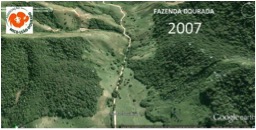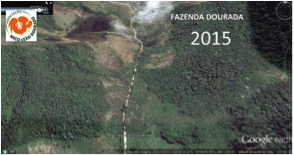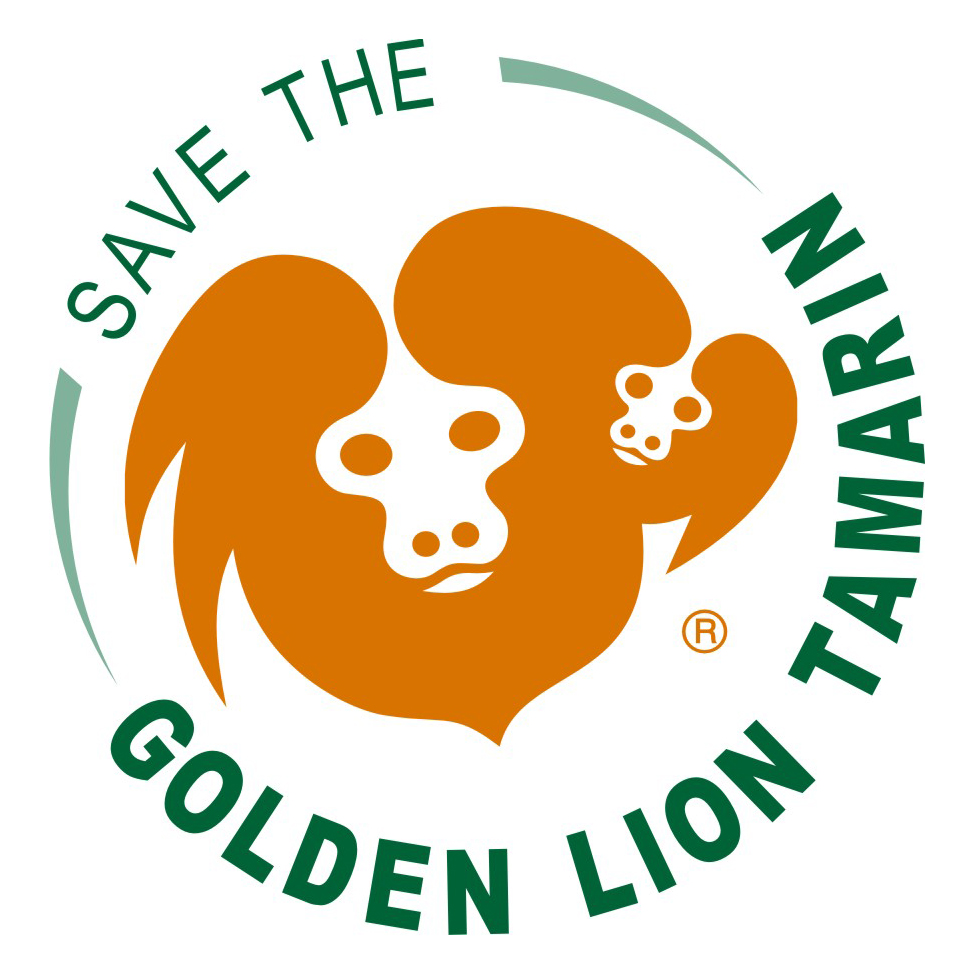A Success Story of Forest Restoration: Fazenda Dourada Corridor
The wind blew, the cloud moved...and look what great news appeared! The forest corridor in the Fazenda Dourada is complete!
An exciting success story for conservation of the Golden Lion Tamarins (GLTs) can now be seen in recently available photos from Google Earth. After more than 40 years of work to ensure a future for this beautiful species, a most urgent remaining task is to ensure existence of enough connected, protected habitat for GLTs and the many other species that live in Brazil’s Atlantic coastal forest. This forest is highly fragmented and efforts are underway to link key fragments by planting native species to form connections between these “islands” of forest.
In 2007 a unique partnership of the Brazilian federal government; local and international organizations; and Save the Golden Lion Tamarin individual donors joined together for AMLD (Golden Lion Tamarin Association), SGLT’s partner organization in Brazil, to purchase a 100-hectare (247-acre) parcel of privately owned cattle pasture in what is called the Fazenda Dourada. This area adjoins one of the largest remaining forest fragments, the União Biological Reserve that was created by ICMBio in 1998 to protect nearly 3,000 hectares (7,400 acres) of GLT habitat. A population of GLTs lives in the Reserve, but was isolated from other forested areas with GLTs by cattle pastures and other deforested areas. It was soon determined that, although challenging, an important effort needed to be made to create a forested corridor between the União Biological Reserve and the newly purchased Fazenda Dourado (see maps).
In 2009 AMLD began the effort of planting native seedlings on this property and conducting the necessary monitoring and caring for the needs of the emerging forest. This involved a lot of time, people, expertise, and dedication of support and financial resources from both private and governmental entities.
However, as work to create the corridor progressed, there was a certain level of frustration among those so dedicated to this effort. The images available on Google Earth from October 2014 showed that the forest was in an advanced recovery process, but with many gaps yet to be filled. It was NOT the result they wanted to share widely, even though it was known that the tamarins, as well as pumas, had already left clear signs that they were using the corridor to travel.
Early 2016 brought another frustration: the new image of Google had a huge cloud right over the planted area. Again, it was apparently not yet time to reveal the result of so much work. But just this April, a brand new image was released. And the result is SPECTACULAR! This can be seen by the chronological sequence in the pictures.
This area is expected to provide an expansion of the Biological Reserve itself, but this will involve continued efforts to facilitate this. AMLD intends to donate the Fazenda Dourado for incorporation into the Reserve by ICMBio, and the hope is that this bureaucratic process will come to fruition before long.
The story of the Fazenda Dourado is a good example of how complex and lengthy a process it is to restore areas of the Atlantic Forest to connect forest fragments. Forest fragmentation is still our biggest challenge to save the golden lion tamarin from extinction. It has now been demonstrated that it was worth such a giant and continuing effort.

Fragmented forest patches before the corridor.

2007, when the land was purchased.

2011, after four years of growth.

2015, after eight years of growth.

2016... with a cloud blocking the view!

2016, showing a functioning cooridor connecting two previously fragmented forest patches!
